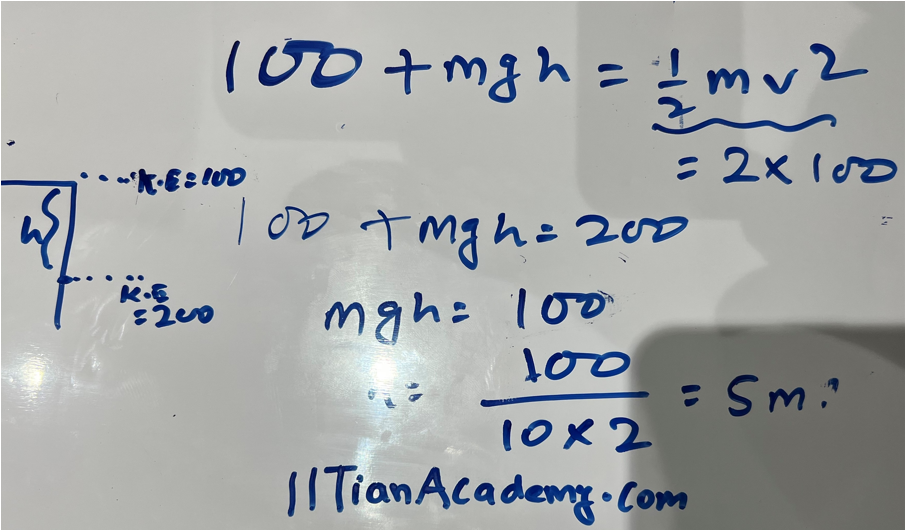IB PHYSICS HL(Higher level) – 2024 – Practice Questions- All Topics
Topic 2.3 – Work,energy and power
Topic 2 Weightage : 9 %
All Questions for Topic 2.3 – Kinetic energy ,Gravitational potential energy ,Elastic potential energy ,Work done as energy transfer ,Power as rate of energy transfer ,Principle of conservation of energy ,Efficiency
Question
A force acts on an object of mass 40 kg. The graph shows how the acceleration a of the object varies with its displacement d.
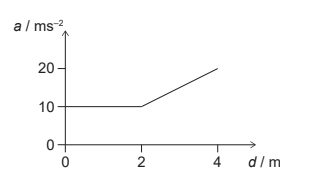
What is the work done by the force on the object?
A 50 J
B. 2000 J
C. 2400 J
D. 3200 J
▶️Answer/Explanation
Ans: B
Ref: https://www.iitianacademy.com/ib-physics-unit-2-work-energy-and-power-notes/

 = area under force displacement graph
= area under force displacement graph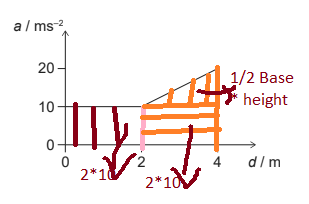
Question
Masses X and Y rest on a smooth horizontal surface and are connected by a massless spring. The mass of X is 3.0 kg and the mass of Y is 6.0 kg. The masses are pushed toward each other until the elastic potential energy stored in the spring is 1.0 J.
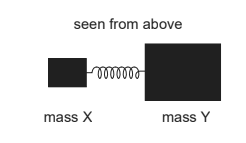
The masses are released. What is the maximum speed reached by mass Y?
A. 0.11 m 
B. 0.33 m 
C. 0.45 m 
D. 0.66 m 
▶️Answer/Explanation
Ans: B
From conservation of momentum
\(m_Xu_X+m_Yu_Y=0\) Since initial momentum of system is zero
or
\(3u_X+6u_Y=0\)
or
\(u_X=-2u_Y\) ….(1)
From conservation of energy.
\(\frac{1}{2}m_X(u_x)^2+\frac{1}{2}m_Y(u_Y)^2= 1J\) …(2)
Puting value of \(u_X\) from equation (1) into (2) we get
\(\frac{1}{2}\times 3\times 4\times (u_Y)^2+\frac{1}{2}\times6\times (u_Y)^2 =1\)
or
\(u_Y^2=\frac{1}{9}\)
or
\(u_Y =\frac{1}{3} = 0.33 m/s\)
Question
A girl is standing on a moving skateboard. She pushes backwards on the ground at intervals as shown on the graph.
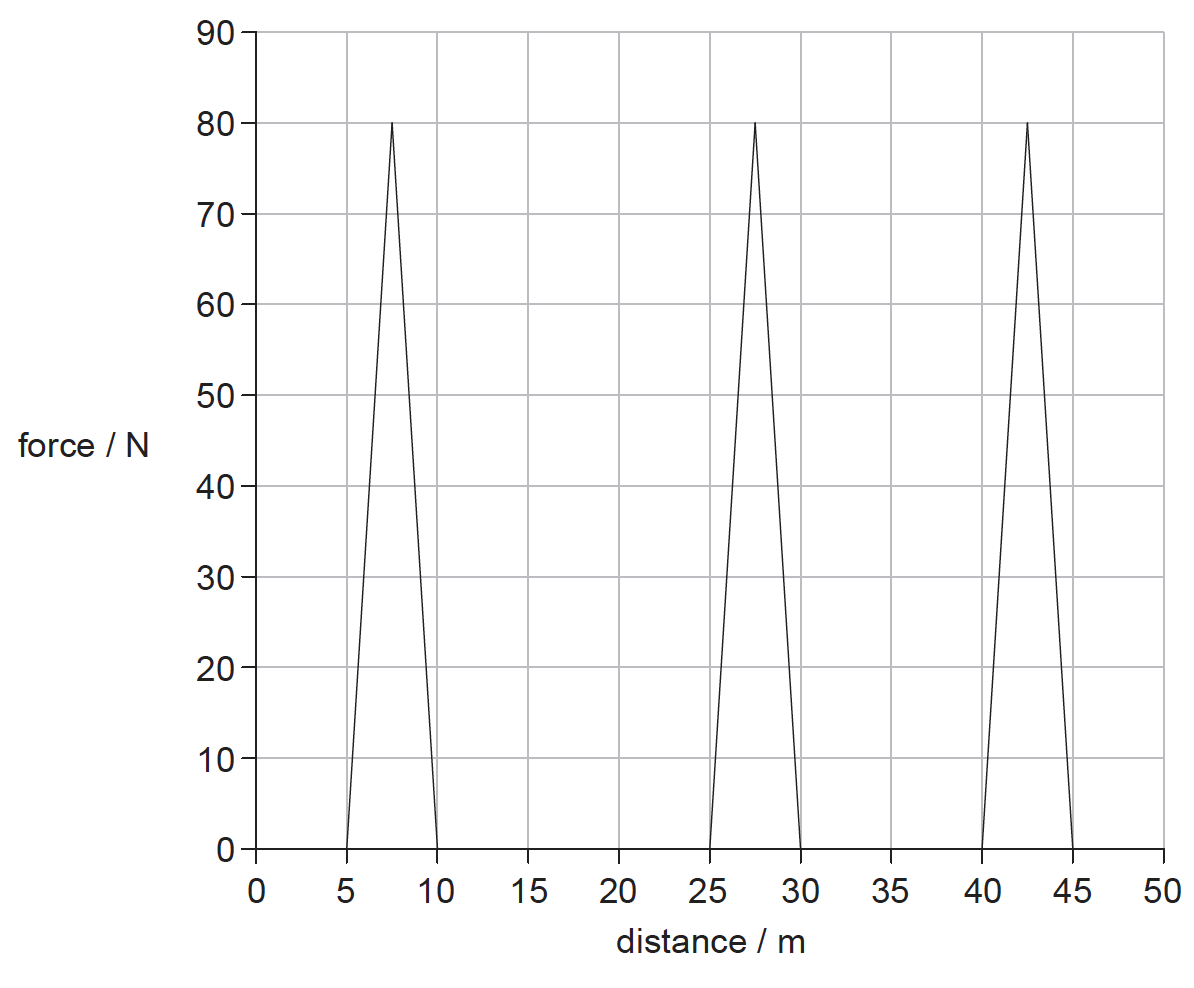
How much kinetic energy is gained by the girl during the period represented on the graph? Frictional forces are negligible.
A. 200 J
B. 400 J
C. 600 J
D. 1200 J
▶️Answer/Explanation
Markscheme
C
Ref: https://www.iitianacademy.com/ib-physics-unit-2-work-energy-and-power-notes/

 = area under force displacement graph
= area under force displacement graphQuestion
A truck is pulled up an inclined plane at constant speed by an electric motor. The gain in potential energy of the truck is 48 kJ. The efficiency of the electric motor is 2/3.
How much energy is dissipated in pulling the truck up the plane?
A. 16 kJ
B. 24 kJ
C. 32 kJ
D. 64 kJ
▶️Answer/Explanation
Markscheme
B
A Heat engine is a device which helps us to get an amount of work when connected to two thermal reservoirs, one at a higher temperature and another one at a lower temperature.
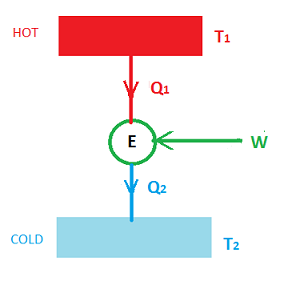
In the above diagram, we can see
- Two thermal reservoirs one at a higher temperature \(T_1 \) and at a lower temperature \(T_2 \)
- Heat \(Q_1 \) flows from the higher temperature reservoir to the engine E
- \(W \) is the work obtained in the Engine
- Heat \(Q_2 \) flows from the engine to the cold reservoir.
- \(Q_1=W+Q_2 \)
The efficiency of a thermal reservoir is given as
\(\eta = \frac {W}{Q_1}=\frac {Q_1-Q_2}{Q_1}= \frac {T_1-T_2}{T_1} \)
Given that a heat engine does W = 48 kJ of work at efficiency of 2/3
Heat supplied to the heat engine is given by \(Q_1 =W+Q_2 = 48 kJ +Q_2 \)
The efficiency of the engine is given by
\(\eta =\frac{2}{3}=\frac{W}{Q_1}=\frac{48}{48+Q_2}\)
or
\(2 \times (48+Q_2)=3 \times 48\)
or
\(Q_2=24\)
Question
Which of the following is always true for an object moving in a straight line at constant speed?
A. No forces act on the object.
B. No resultant force acts on the object.
C. The momentum of the object is zero.
D. No work is being done on the object.
▶️Answer/Explanation
Markscheme
B
If an object is moving at constant speed, it means that there is no acceleration, the speed will be the same all the time during motion.
Question
Which of the following is a correct definition of work?
A. Product of force and distance
B. Product of force and distance moved in the direction of the force
C. Product of power and time
D. Product of force and displacement
▶️Answer/Explanation
Markscheme
B
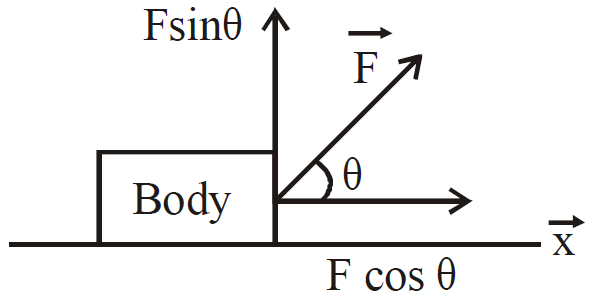
Question
An object of mass 2kg is thrown vertically downwards with an initial kinetic energy of 100J. What is the distance fallen by the object at the instant when its kinetic energy has doubled?
A. 2.5m
B. 5.0m
C. 10m
D. 14m
▶️Answer/Explanation
Markscheme
B
